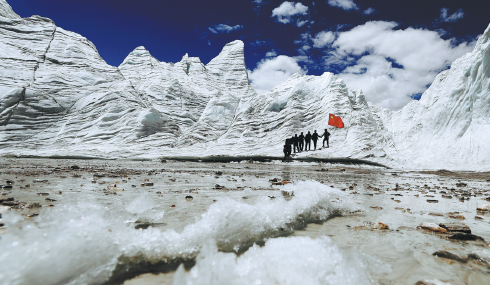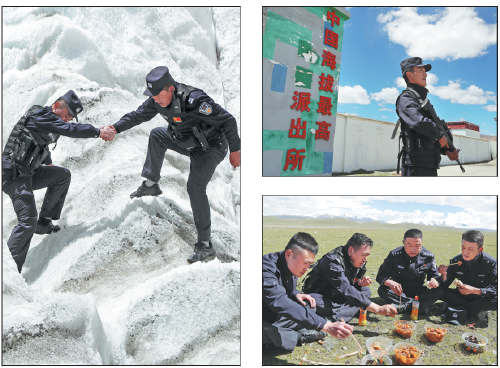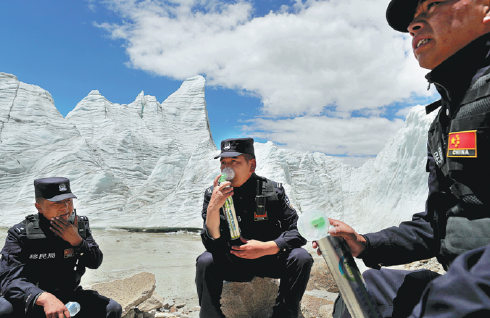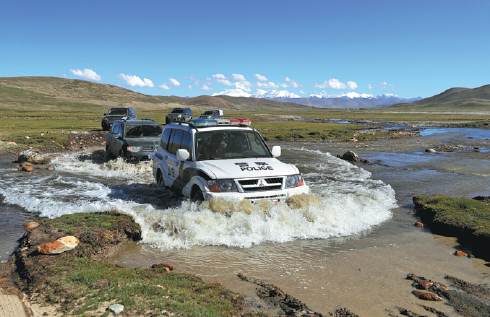Police achieve peak performance
Officers at Tibetan station overcome altitude sickness, heavy snowfalls, cold temperatures and UV rays

At 5,373 meters above sea level, the border police station at Pumaqangtang in Lhokha, Tibet autonomous region, is the highest in the country. There are nine police officers at the police station, which was opened in March 2012.
The majority of them are from outside the area and are age 30 on average. After living on the plateau for years, where exposure to ultraviolet radiation is higher than at sea level, all the officers are deeply tanned.
They also have to contend with physical challenges caused by the high altitude. The oxygen level is 40 percent lower than that at sea level, while the average annual temperature is about-7 C. Outsiders usually take a month to get used to the high altitude, but some of the police officers still suffer from insomnia caused by altitude sickness. Oxygen tanks are provided for everyone at the station.
Apart from their regular duties in Pumaqangtang town, the police officers also regularly patrol the Kampug glacier, which is located at an altitude of 5,600 meters and is a popular tourist attraction. The police officers have been involved in more than 40 rescue operations at the glacier. It takes two hours to drive from the police station to the glacier, and by the time they finish a return trip it is usually nightfall.
In summer, water from the melting ice makes the road to the glacier bumpy and muddy, and vehicles often get stuck in the mud. During the winter months, there is the threat of motorists getting lost, including the police officers themselves, after heavy snowfalls blanket the roads.
"Each rescue mission has a different story behind it," said Sonam Daje, deputy chief of the Nakartse border management team, which is in charge of the station. "We have received hundreds of letters of appreciation for our help rescuing people."
The officers have built a greenhouse to grow 16 varieties of vegetables in order to improve their diets. The annual yield from the greenhouse is more than 500 kilograms, and the station is well on the way to being self-sufficient in vegetables.


































